Boondocking at Kofa National Wildlife Refuge is the perfect way to spend a few days. You can hike up to hidden palms, explore back roads or visit a mining ghost town!
Disclosure: This post may contain affiliate links. If you buy something from one of our affiliates, we receive a small commission at no extra charge to you. Thanks for helping to keep our blog up and running!
Table of Contents
What and Where is Kofa National Wildlife Refuge?
Kofa National Wildlife Refuge is an area of over 666,000 acres in the Kofa and Castle Dome Mountains 40 miles (64 km) north of Yuma, Arizona. It was originally established in 1939 as the Kofa Game Range for the conservation of desert bighorn sheep.
You might also want to read our post on New Water Mountains Wilderness
located on the northern edge of Kofa NWR!
Name that Mountain Range!
The name Kofa came from an acronym for the “King of Arizona.” Gold was discovered at this mine site in 1896. It was a working mine from 1897 until 1939.
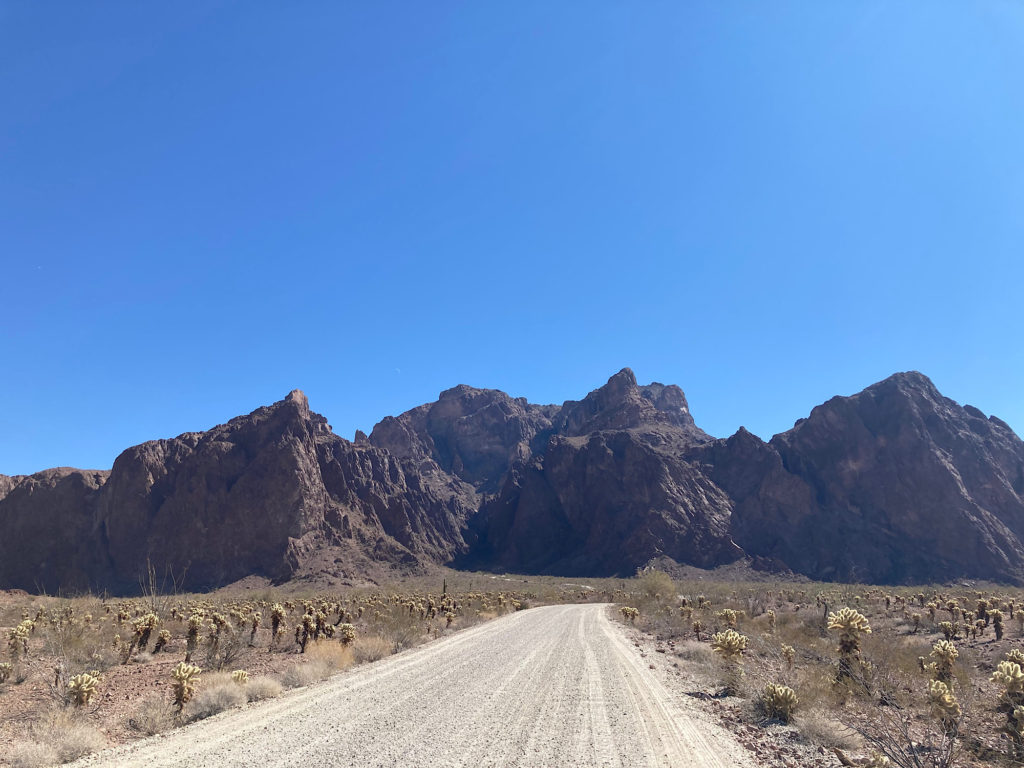
Boy Scouts to the Rescue
Here’s a cool historic fact: Kofa National Wildlife Refuge would not exist it weren’t for the efforts of the Boy Scouts.
It’s true!
In the late 1930s, a frontiersman turned conservationist named Major Frederick R Burnham observed that populations of bighorn sheep were quickly declining. He convinced the Boy Scouts to take up the cause for their recovery.
For two years, more than 10,000 Boy Scouts and their leaders campaigned to protect bighorn sheep. They held a “save the bighorns” poster contest. Scout groups gave talks. They created dramatizations for radio. And scout troops spoke out about the plight of the bighorn sheep at school assemblies.
As a result of their efforts, land was set aside for the establishment of the Kofa Game Range.
Kofa National Wildlife Refuge Today
The area is far from untouched by human hands.
Gold and silver mines were established in the mountainous areas of the Refuge, and lead and copper mines in the foothills and outwash plains. Since the middle of the 19th Century, mining of the mountains’ treasures has been a reality. Some claims are still active today.
The Kofa Game Range was jointly managed by the U.S. Fish & Wildlife Service and the Bureau of Land Management. In 1976, the US F&W Service took over control and it was renamed the Kofa National Wildlife Refuge. In 1990, close to 550,000 acres of the refuge was designated as wilderness.
Today, more than 80 percent of Kofa National Wildlife Refuge is protected under the Wilderness Act. It continues to provide protection for desert bighorn sheep as well as Sonoran pronghorn (a federally endangered pronghorn sub-species), the Kofa Mountain barberry (found only in southwest Arizona) and less than 100 California fan palms (last place where native California palm trees grow in their natural habitat in Arizona).
The area also provides excellent recreational opportunities such as biking, hiking and camping.
Click on this link for more Arizona travel adventures!
Accessing Boondocking Sites in Kofa
While there are dozens of old roads in the refuge – from the New Water and Kofa Mountains in the north, across the wide King Valley in the centre, Tank Mountains in the southeast and Castle Dome Mountains in the southwest – most require 4WD vehicles.
Love boondocking? Check out Southern Arizona RV Travel for more ideas!
The five fairly good dirt roads for accessing boondocking sites in and around Kofa on its western edge off Highway 95. These include the MST&T Road, Blevens/Pipeline Road, Palm Canyon, King Road and the Castle Dome Mine Road.
We chose the seven-mile-long Palm Canyon Road because of its proximity to the jagged peaks of the Kofa Mountains and to explore the palms and wander along the offshoot Kofa Queen Canyon Road. There are dozens of options within the first four miles (6.4 km) for camping while still on BLM land. After crossing the Kofa Refuge border, all campers must stay within 100 feet (30 m) of established roads.
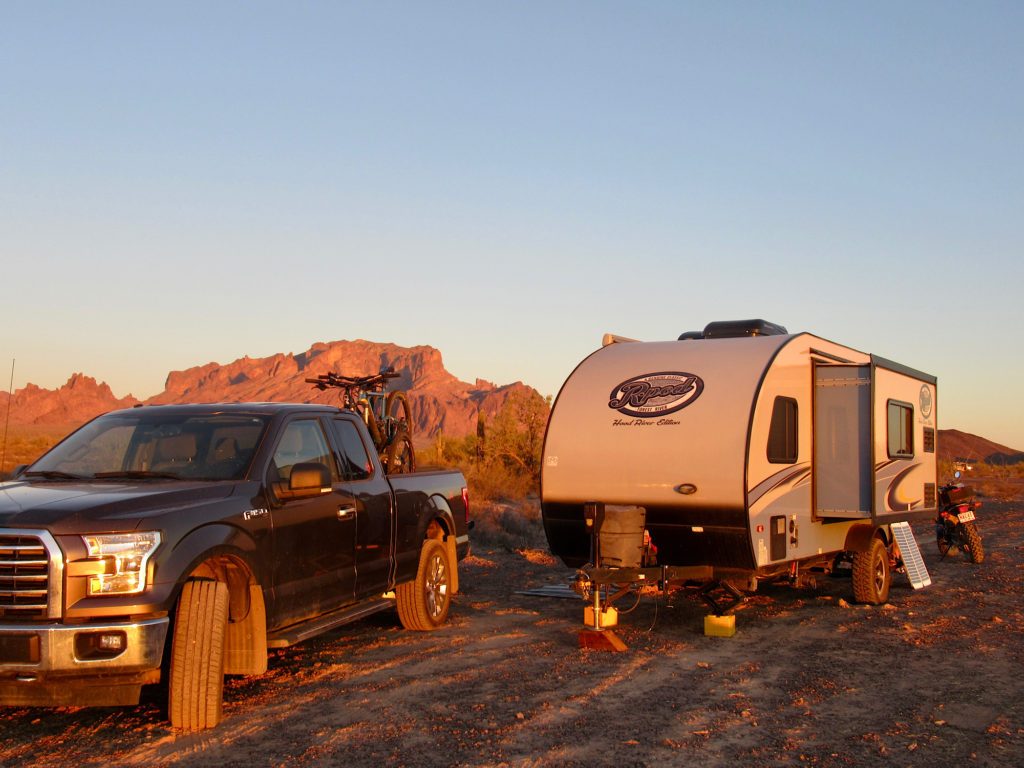
If you enjoy boondocking, check out Saddle Mountain to the east!
Hiking Palm Canyon
There’s a good-sized parking area at the end of Palm Canyon Road along with interpretive signs at the trailhead. It’s a short but rocky walk up 0.5 miles (0.8 km) to the official end of the trail. You’ll know you’re there when you see a sign reading “Palms” with an arrow pointing to the left side of the canyon. This marks the end of the official trail.
First discovered by botanist O.F. Cook in 1923, these California fan palms are possibly the only native palm tree in Arizona. They are descendants of palms growing in this area during the last periods of North American glaciation. These canyon niches offer protection as the climate warmed and the area became a desert.
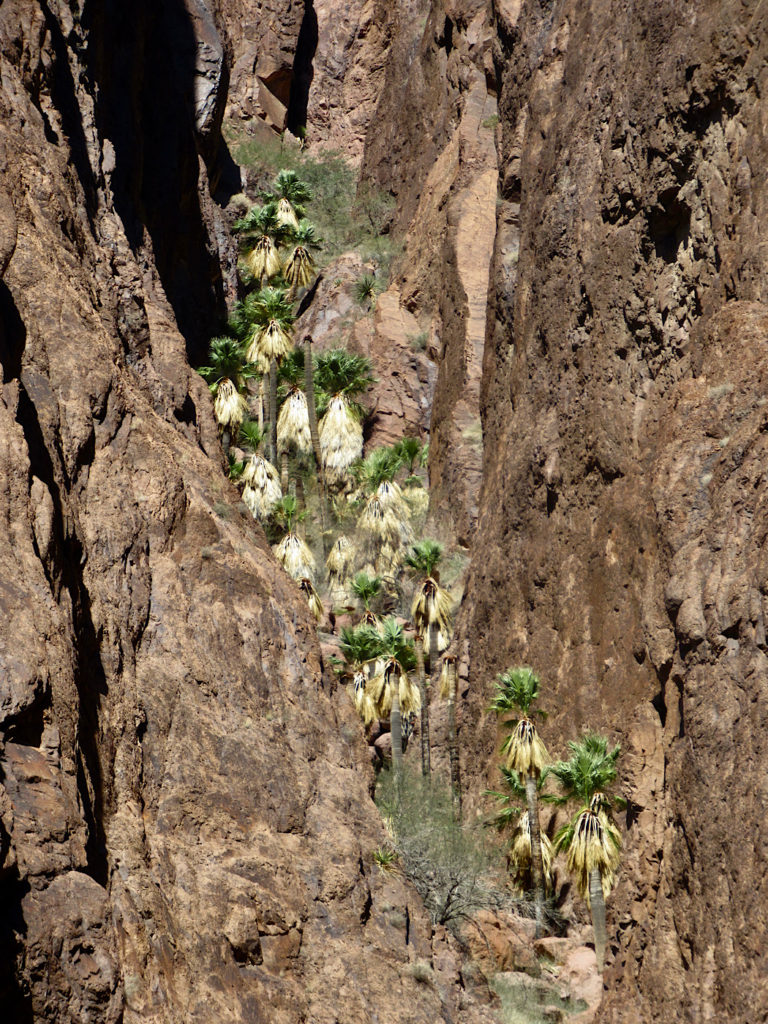
We continued past the “end of trail” and scrambled up to the palms. There are two options as the side canyon narrows. We kept right. The left side route leads to high dry fall. It looks like people have been scrambling up and down this route, but we chose not to and took the rock squeeze to the right instead. Lots of loose rock, so if you go, watch your footing carefully.
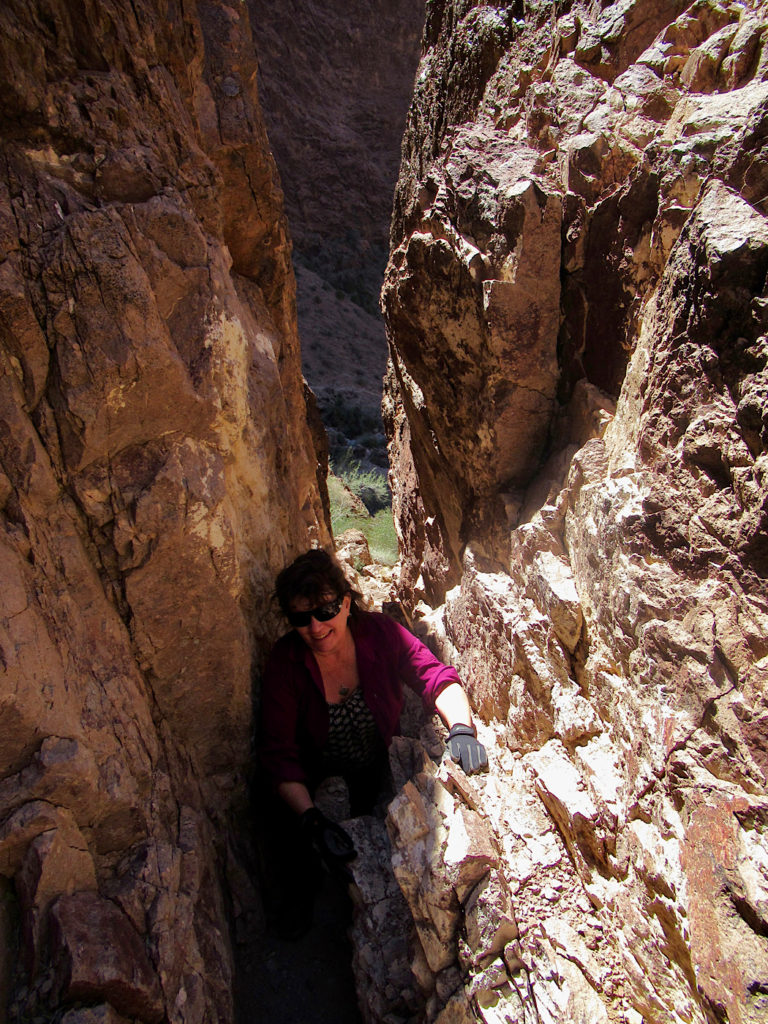
Close up the palms show fire scars from days gone by. A breeze rustled through the fronds. It’s the perfect spot to sit and gaze as these archaic wonders while watching the sun and shade play across canyon walls while a canyon wren sings.
Back down in valley bottom, we headed up to a small patch of sunshine to grab a snack before continuing up the canyon, scambling over boulders bigger than me. Up, down, around, up, down… and there it was! A Kofa Mountain barberry. I love plants, especially rare ones like this species of barberry!
Exploring Kofa Queen Canyon Road
Unloading the motorbike, we drove down to the entrance kiosk and headed northwards on the Kofa Queen Canyon Road. It’s narrower and a little rougher than the Palm Canyon Road for the first half, but we still saw a Volkswagen van parked before the main canyon entrance.
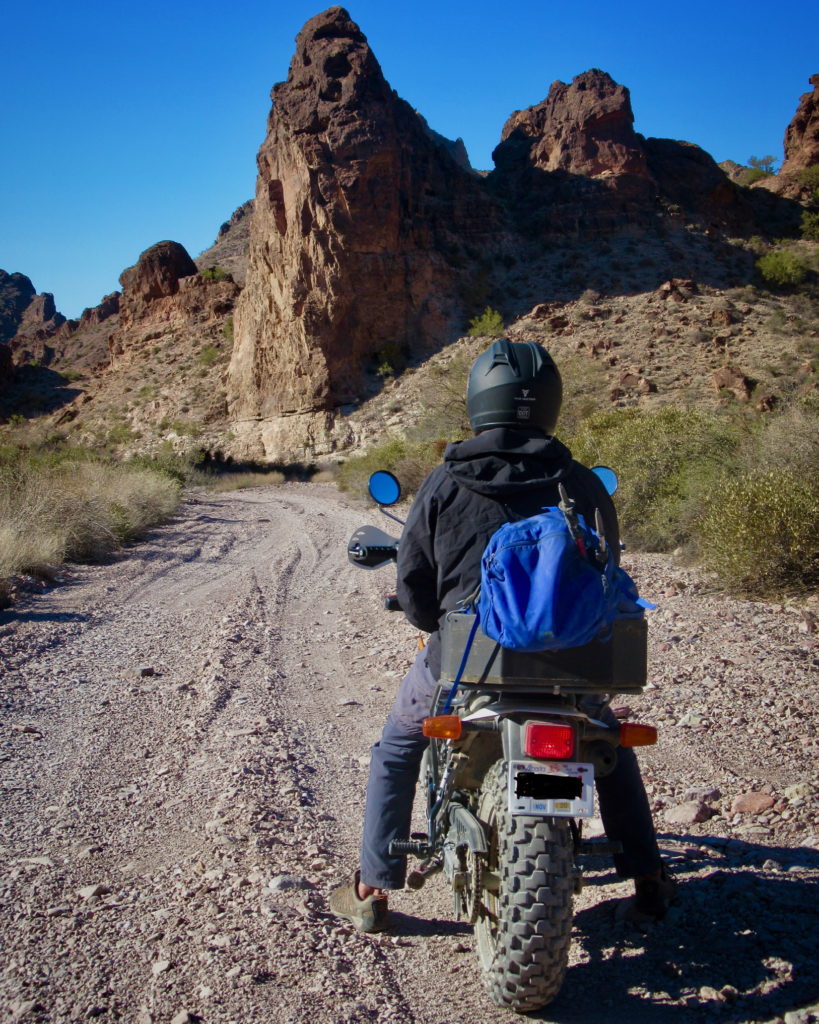
The canyon entrance is the best place to park if driving anything other than a side-by-side or motorbike. It was a bit of a rough ride dodging branches even on the motorbike! I’d park and unload our mountain bikes here next time.
We clocked the distance from the entrance kiosk to the road closed sign at the end as being 9.1 miles (14.7 km). It’s a stunning area to explore with sculpted cliffs and grassy passes. We need to come back with more time to hike and bike.
Tomorrow we’re off to explore the ghost town of Castle Dome – join us for this historic adventure!
When You Go
Maps and information are available at the Kofa Visitor Centre/Headquarters in Yuma (9300 E. 28th St., Yuma, AZ) as well as at entrance kiosks. You can also find a brochure and map online here.
To enter the refuge itself, take Hwy 95 south from Quartzite or north from Yuma. Look for the signed turn for Palm Canyon Road at mile marker 85.
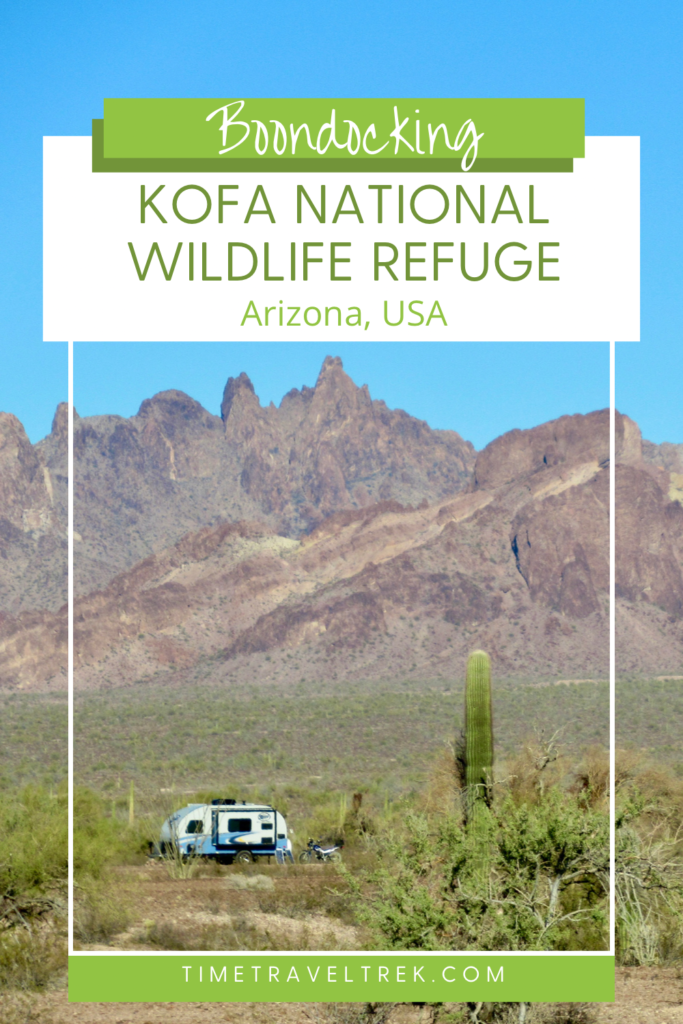
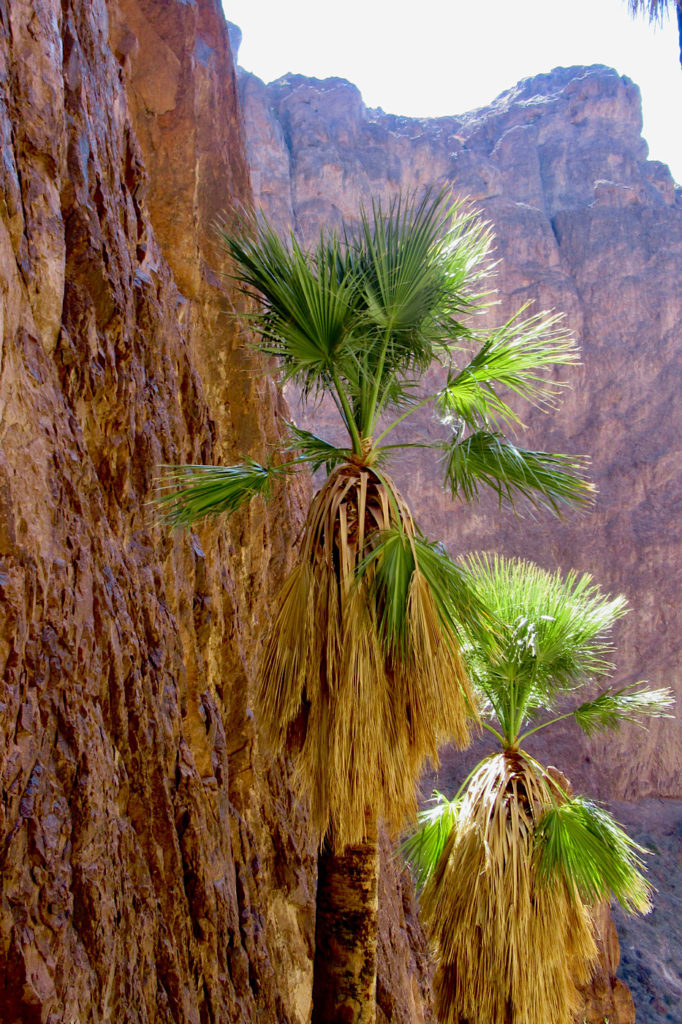
Good to see a TW200.
If you are not a member check out TW200forum.com, lots of good information and a great group of people who get together to ride. I have lead a few rides in the KOFA and like camping at Crystal Mountain.
Thanks for the tip on the TW200 forum, we’ll check it out! The TW200 is the perfect lightweight motorbike for accessing rougher backroads and remote hiking trails!
So happy to find this article. My late cousin owned the King of Arizona mine… It now belongs to the family. I can’t wait to visit and feel and see our families heritage.
Cool – I love it the stories I share find a home with a family member!
♥️